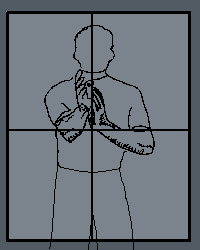


If we look at pictures of WC and JKD stances, couldn't the same be said for them?
-> In the 1st picture, the face and groin are open. (...and gut?)
-> In the 2nd picture, the face and liver are open.
-> In the 3rd picture, the face and chest are open.
I am at fault for saying the centerline isn't exposed in post #8, though. I meant to say that it isn't unprotected, which is a bit differentI apologize for any misunderstanding.
My central point is that i doubt you could come in and land a centerline strike w/o getting hit in the face... I imagine this is where trapping would come in, or a deflection at least.
On an related subject, in the video you have on Members In Motion your face is wide open. The face is an important part of the centerline
(elbows in, not just horizontally. keep them closer to your body. you can move your arms forward a bit if you have to.)
You guys are completely misinterpreting centerline theory.
It has nothing to do with what targets (groin, stomach, face, whatever) run down the center of your body. The centerline is the direct line between your core and your opponent's core, regardless of angle or facing. If I am on your flank, the temple, jaw, shoulder, ribs, kidney, etc. are on the centerline. It's all relative.
If you want an understanding of the centerline and how its used, you might do well to look at fencing -- in particular Historical Rapier, though the theory exists in all forms of fencing from the middle-ages right on to modern sport fencing. It's basically just Wing Chun with swords.
Centerline theory is present in many arts, and you can use it even in arts where it's not typically taught explicitly. It's certainly relative to arts such as boxing, for instance.
